Welcome back, class.
I’ll start with the concerning fact that Virginia Woolf doesn’t have a single work on the list. And, to follow up: out of 50 titles on the list, ten are composed by women. So today is about Virginia Woolf’s 1927 novel, To the Lighthouse.
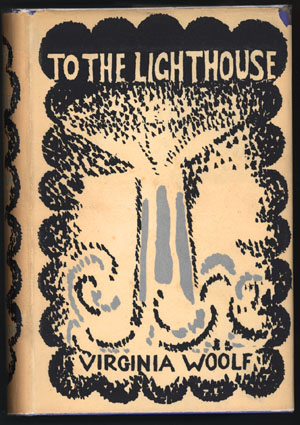 Virginia Woolf is one of those hallmark authors who stand out by reputation alone, regardless of sex as a qualifier, while still being one of the clearer representatives of feminism known in literature. The fact that she has no novel on the 50-books list highlights the fact that so many other women are left off of it, too.
Virginia Woolf is one of those hallmark authors who stand out by reputation alone, regardless of sex as a qualifier, while still being one of the clearer representatives of feminism known in literature. The fact that she has no novel on the 50-books list highlights the fact that so many other women are left off of it, too.
So either the creators of this list actually tried and failed to find an appropriate amount of female authors, which hints at incompetence (hence, my Missing From the List posts); or, even worse, they deliberately chose all books by male authors and decided in retrospect to throw a bone toward diversity, and the female authors they did choose are featured simply to meet a diversity quotient (and that’s just considering female authors—for authors of racial and other minorities, you’ll have to hear this rant in a separate post).
Either way, the misogyny is strong with this one.
After such a rant, though, I have to admit I’ve only read one of Woolf’s works—but it was really good! To the Lighthouse is a beautiful work of modernist fiction that is special not because of the story, but because of its meaning and the way it’s told. For more on what modernism is, look at my previous post on it.

The Isle of Skye, where the action of To the Lighthouse takes place.
The novel is separated into three parts. Part 1, “The Window,” takes place on one evening in 1910, while the Ramsay family visits their vacation home on the Isle of Skye. We meet the characters and understand their complicated dynamics. Then there’s part 2, “Time Passes,” which is a fluid and ambiguous portrayal of ten years of time, encompassing World War I and the deaths of many major characters in the family. Finally, part 3, “The Lighthouse,” takes place on another evening in 1920, when the family returns to their vacation home as almost completely new people.
The story’s strength is it’s symbolism. The lighthouse represents an unreachable goal, and the terrible weather is the natural world that attacks and hinders humanity’s endeavors. The link between the two evenings, separated by ten years of time, is portrayed through the painting one character works on for those ten years, incomplete without the passage of time—just like the novel itself, incomplete without the strangeness of part 2, loosely stringing together the beginning and the end of Woolf’s novel. Through such symbolism, To the Lighthouse is careful, artistic, experimental, and wonderfully strange, and belongs on the list simply because of what it’s able to do.
 Something I tend to forget about modernism is its obsession with time. Novelists from this period liked to portray the unreliability of time by reorganizing chronological order, speeding up and slowing down the story, and confusing a single moment with an eternity. Virginia Woolf fit right in with these modernists—entire chapters in parts 1 and 3 of To the Lighthouse take place in seconds, while part 2 speeds through ten years in no time at all. The action of parts 1 and 3 is also mostly internal, letting stream-of-consciousness explain characters and their motivations—something modernism all but invented.
Something I tend to forget about modernism is its obsession with time. Novelists from this period liked to portray the unreliability of time by reorganizing chronological order, speeding up and slowing down the story, and confusing a single moment with an eternity. Virginia Woolf fit right in with these modernists—entire chapters in parts 1 and 3 of To the Lighthouse take place in seconds, while part 2 speeds through ten years in no time at all. The action of parts 1 and 3 is also mostly internal, letting stream-of-consciousness explain characters and their motivations—something modernism all but invented.
Which brings me to a complicated point. In a lot of ways, this novel reminds me of Ulysses—need I remind you, one of my favorite novels ever. To the Lighthouse may never match Ulysses in my eyes, but it comes closer than most novels because it does everything Ulysses does (challenges convention, scrambles time, uses stream-of-consciousness to tell a better story, etc.), to the point that if I wanted someone to try Ulysses, I might have them read To the Lighthouse first.
And if To the Lighthouse accomplishes what Ulysses does, and it’s easier on the brain to boot, maybe To the Lighthouse should be on the list INSTEAD of Ulysses (which hurts me to write, I assure you). I’m noticing that there are works on the list that shouldn’t be read—studied or made aware of, absolutely, but not “cozy-up-with-on-the-couch” read. The Bible, The Divine Comedy, The Canterbury Tales, and Ulysses are each books on the list that make more sense as references and less sense as cover-to-cover reading challenges.

Author Virginia Woolf
On a list called “50 Books to Read Before You Die,” there should be books that readers can gain something from. Books like Ulysses fly a little to close to the sun for readers to enjoy, whereas a book like To the Lighthouse (while in no way an easy novel) allows readers the chance to fly as well.
To bring it back to feminism, and the lack of it featured on the list, here’s a post I made back in March (National Women’s History Month) on the great women writers I know.
Part of the reason To the Lighthouse should be on the list, even in place of Ulysses, is because it’s more accessible. But more importantly, Virginia Woolf’s lifetime statement on behalf of female authors allows To the Lighthouse to have something Ulysses only hopes to have: the voice of the female artist. This is more than the idea of a diversity quotient. This is about representation of female authors, and how statements of all kinds—novels, plays, poems, paintings, stories—when represented mostly by one kind of person, are incomplete statements.
I am still reading A Passage to India by E. M. Forster, another representative of modernism and of a minority—but more on that next class.
Until then,
Prof. Jeffrey

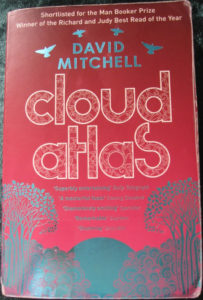 The first story is from the perspective of the attorney Adam Ewing on a Pacific ship in the 1800s, writing his experiences in his journal. The journal stops midway and picks up with an entirely new character, Robert Frobisher, a young composer in the 1930s working with a crippled aging composer as a sort of apprentice. Frobisher writes letters to his distant lover—both his letters and his lover are plot devices in the third story, a 70s mystery novel focusing on the stouthearted journalist Luisa Rey, who attempts to get to the bottom of a corporate conspiracy.
The first story is from the perspective of the attorney Adam Ewing on a Pacific ship in the 1800s, writing his experiences in his journal. The journal stops midway and picks up with an entirely new character, Robert Frobisher, a young composer in the 1930s working with a crippled aging composer as a sort of apprentice. Frobisher writes letters to his distant lover—both his letters and his lover are plot devices in the third story, a 70s mystery novel focusing on the stouthearted journalist Luisa Rey, who attempts to get to the bottom of a corporate conspiracy.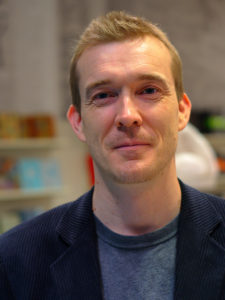
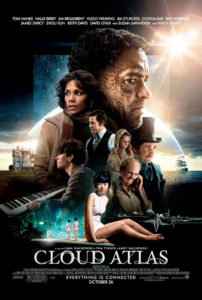
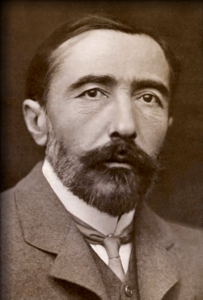
 Virginia Woolf is one of those hallmark authors who stand out by reputation alone, regardless of sex as a qualifier, while still being one of the clearer representatives of feminism known in literature. The fact that she has no novel on the 50-books list highlights the fact that so many other women are left off of it, too.
Virginia Woolf is one of those hallmark authors who stand out by reputation alone, regardless of sex as a qualifier, while still being one of the clearer representatives of feminism known in literature. The fact that she has no novel on the 50-books list highlights the fact that so many other women are left off of it, too.
 Something I tend to forget about modernism is its obsession with time. Novelists from this period liked to portray the unreliability of time by reorganizing chronological order, speeding up and slowing down the story, and confusing a single moment with an eternity. Virginia Woolf fit right in with these modernists—entire chapters in parts 1 and 3 of To the Lighthouse take place in seconds, while part 2 speeds through ten years in no time at all. The action of parts 1 and 3 is also mostly internal, letting stream-of-consciousness explain characters and their motivations—something modernism all but invented.
Something I tend to forget about modernism is its obsession with time. Novelists from this period liked to portray the unreliability of time by reorganizing chronological order, speeding up and slowing down the story, and confusing a single moment with an eternity. Virginia Woolf fit right in with these modernists—entire chapters in parts 1 and 3 of To the Lighthouse take place in seconds, while part 2 speeds through ten years in no time at all. The action of parts 1 and 3 is also mostly internal, letting stream-of-consciousness explain characters and their motivations—something modernism all but invented.
Recent Comments